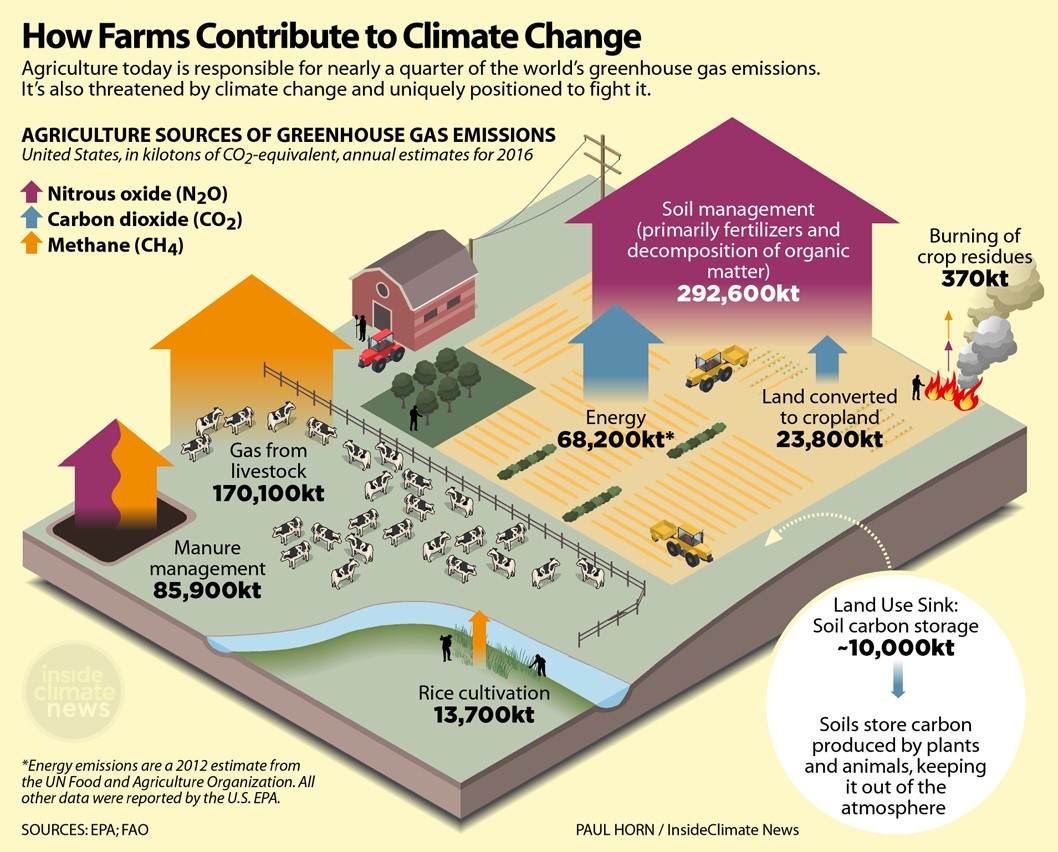
The Farming for a Better Climate series explored a variety of climate-smart agricultural practices that aim to maintain, or even increase, farm profitability while also slowing climate change.

The Farming for a Better Climate series explored a variety of climate-smart agricultural practices that aim to maintain, or even increase, farm profitability while also slowing climate change.

In pastoral agricultural days, and on some farms around the state today, cattle, pigs, turkeys, and chickens roamed the countryside, held in relative place using fencing or a centralized food source.

In pastoral agricultural days, and on some farms around the state today, cattle, pigs, turkeys, and chickens roamed the countryside, held in relative place using fencing or a centralized food source.

According to the United States Environmental Protection Agency, soil management practices contribute 68% of total agriculture industry greenhouse gas (GHG) emissions.

Cover crops are nothing new, but their relationship to a changing climate might be new to many farmers.

Agriculture is part of the solution when it comes to combating climate change, and it all starts with soils.

When it comes to retaining water in the middle of a summer dry spell or absorbing extra rainfall during a spring storm, our soils need organic matter to keep roots happy and nutrients cycling.

Farming For a Better Climate is all about finding ways to maintain or increase profits while slowing climate change.
© 2025 Purdue University | An equal access/equal opportunity university | Copyright Complaints | Maintained by Pest&Crop newsletter
If you have trouble accessing this page because of a disability, please contact Pest&Crop newsletter at luck@purdue.edu.